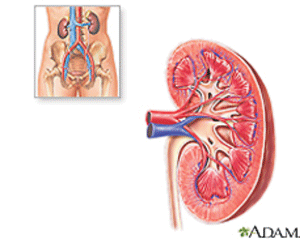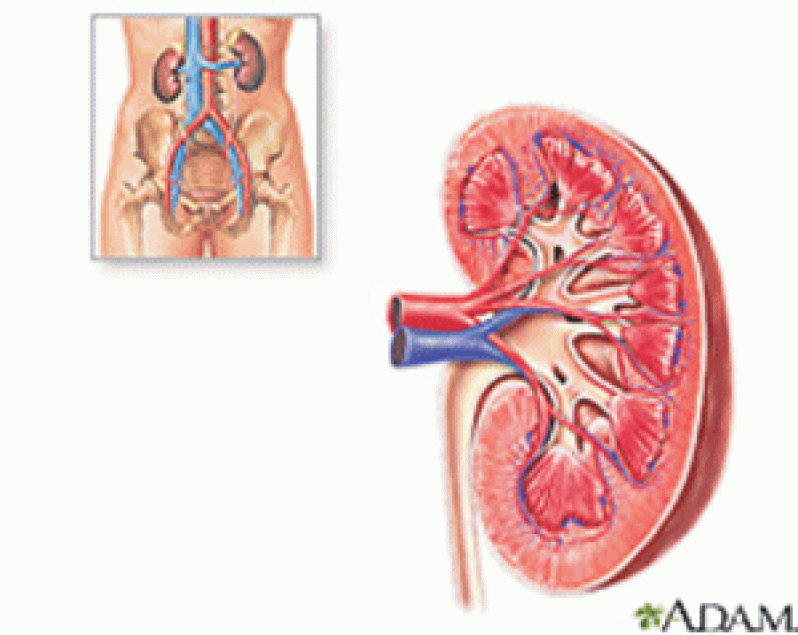Dialysis should be a last resort
WORLD Kidney Day was observed on March 8, bringing us the timely reminder that in Guyana the number of persons with kidney disease, triggered by diabetes and high blood pressure is spiraling out of control, to the extent that it has now become a major health concern. And while the figures for diabetics currently on treatment for kidney disease cannot be immediately ascertained, indications are that it is worrying. In 2004, then Minister of Health, Dr. Leslie Ramsammy announced at a World Diabetes Day forum that, the number of diabetics in Guyana at that time was 35,000, with an annual increase of about 12,000.
 |
| [Graphics from the National Institute of Health] |
Eight years later, with no significant breakthrough having been made on breaking the back of that trend, and with the majority of diabetics and hypertensive cases being relegated to the status of ‘See Food Eaters’ according to one Diabetic doctor, it is reasonable to assume that the number of diabetics and hypertensive cases at risk for kidney disease would have since doubled. This is particularly in the light that, intemperance eaters as many diabetics are, doctors continue to lament that the patients are continuing to collect medication and not use them as advised. As a result many have now developed Chronic Kidney Disease (CKD), while others have advanced to End Stage Renal Disease (ESRD), the complete or almost complete failure of the kidney to work. It is at this stage that the person is compelled to go on dialysis, so that the blood can continue to be filtered.
Important organs
The kidneys remain one of the most important organs of the human body, without which, the blood could not be processed and waste removed from the body. Its main function therefore, is to filter and keep the blood clean and chemically balanced. It is therefore important for persons, at all times, to strive towards maintaining healthy kidneys and avoid developing renal problems which can ultimately result in End Stage Renal Disease (ESRD).
Dialysis (Hemodialysis), which is being offered in Guyana, uses a special filter called a dialyzer that functions as an artificial kidney to clean a person’s blood. The dialyzer is a canister connected to the hemodialysis machine. During treatment, the blood travels through tubes into the dialyzer (outside of the body), and filters out wastes, extra salt, and extra water. The cleaned blood flows through another set of tubes back into the body. The hemodialysis machine monitors blood flow and removes wastes from the dialyzer. Hemodialysis is usually performed at a dialysis center three times per week for 3 to 4 hours.
As the National Institute of Health (NIH) aptly puts it: “Healthy kidneys clean your blood by removing excess fluid, minerals and wastes. They also make hormones that keep your bones strong and your blood healthy.” It however warns, “But if the kidneys are damaged, they don’t work properly. Harmful wastes can build up in your body. Your blood pressure may rise. Your body may retain excess fluid and not make enough red blood cells. This is called kidney failure.”
Treatment plans
And citing treatment plans for failing kidneys, NIH advises, “If your kidneys fail, you need treatment to replace the work they normally do. The treatment options are dialysis or a kidney transplant. Each treatment has benefits and drawbacks. No matter which treatment you choose, you’ll need to make some changes in your life, including how you eat and plan your activities.” But with the help of healthcare providers, family and friends, most people with kidney failure can lead full and active lives,” the Institute assures.
Whatever the statistics, it is sufficiently telling, to have warranted the investment by a group of Canadian-based Guyanese philanthropists, pioneered by Dr. Ram Doobay and Vic Oudit, in the opening up of a $25M Dialysis Centre – a registered non-profit organization at Annandale in September, 2011. The mandate was to provide dialysis to persons in need of it, at an affordable cost US$15 per session, compared to the cost elsewhere. Such Sessions must be taken thrice per week. This has brought to two, the number of dialysis centers in Guyana, the other being the 5G Dialysis Centre in South Ruimveldt.
But Dr. Doobay, a recipient of the Order of Ontario, continues to emphasize that, while dialysis is essential for persons who have suffered renal failure, there is a primarily role for the Doobay Dialysis Centre. That is to help people with diabetes and renal problems, manage their condition, and so avoid altogether, having to reach the stage of going on to dialysis.
Patient education
Dr. Doobay sees patient education as key to the management of such conditions and advocates for a proactive approach to dealing with renal disease. He cautions against placing people on dialysis too early when there are other procedures which can be employed. Alluding to some cases seen by him, he said that had their blood sugar and blood pressure been monitored and treated, it would have eliminated the need for dialysis.
Insisting that dialysis is not the proper answer to managing renal disease, Dr. Doobay emphasized, “Dialysis means that you have failed to manage renal disease. Therefore, what we aim to do at the Doobay Dialysis Centre is to prevent patients with renal disease from having to go on dialysis by monitoring closely their creatinine, blood sugar reading and such things.”
Diabetics and hypertensive cases are urged to take their condition seriously, work closely with their doctors, following doctors’ in relation to the type of diet they should follow; the need for regular exercise; as the need to avoid undue stress and not least, to take their medication as prescribed by the doctors.
It is to be noted that diabetic medication, when taken on an empty stomach lead to diarrhoea, with the result that the patient can become dehydrated.
Sage advice
If you are diagnosed as a diabetic or hypertensive case, join a clinic as soon as possible, and attend your clinic appointments without fail. A your clinic, aside form random blood samples (RBS),your doctor will, at prescribed times, order that you go to the Laboratory to have a Fasting Blood Sample (FBS) done. Usually, this requires fasting from 21:00 hrs (9.00 p.m.) until 9:00 hrs the following morning at which time the test is done. Only after taking the blood test is the patient allowed to resume eating, and must take something solid, but recommended.
Your doctor will usually order such a test for good reasons, and therefore it is important that the patient takes the blood test which is usually painless. At the end of the test a Biochemistry report is put up by the Technologist/Technician at the lab. That report, when collected by the patient at a subsequent date, must be returned to the patient’s doctor. At the clinic or health centre, the doctor reads the report which is the most reliable way of determining the state of the patient’s health. For example, the state of the person’s kidney. Such investigations may include:
• Blood Urea Nitrogen (BUN) which gives an indication of the nitrogen in the blood . BUN is a waste product that is normally removed from the blood by the kidneys and is excreted in the urine. High BUN levels can be due to high-protein diet, dehydration, or kidney or heart failure. The normal range is 8-23. Anytime it exceeds that level or even borders around 23, it spells danger for the patient and requires quick intervention by the doctor.
• Creatinine: Produced when muscle is broken down. Blood levels of creatinine are a measure of kidney function. High levels are usually due to kidney problems. Doctors use creatinine level to determine how well the kidneys are functioning. The normal range for creatinine is 0.7 – 1.5
• Uric Acid: Uric acid is a chemical created when the body breaks down substances called purines, usually found in some foods and drinks, such as liver, mackerel, dried beans and peas, beer, and wine. When dissolved in the blood, it travels to the kidneys, where it passes out in urine. If the body produces too much uric acid or doesn’t remove enough of it, it can lead to illness. Too much uric acid may form crystals or kidney stones, and can also lead to arthritis. The normal range is between 2.0 to 7.0 even though saturation point can vary.
• Protein: The type of protein measured in blood is often the protein involved with the immune system. High levels can be due to many factors, for example: Infection or chronic inflammation. The normal range is 6.6- 8.5
• Glucose: Normal range – between 70 -110.
Diabetic Kidney Disease
Diabetes is a disease that keeps the body from using glucose (a form of sugar) as it should. If glucose stays in the blood instead of being broken down, it builds up and can act like a poison, thus causing damage to the kidneys. Damage to the nephrons in the kidney, resulting from a build-up of glucose in the blood is called diabetic kidney disease.
Wastes in the blood come from the breakdown of active tissues such as muscles, or from the food we eat. If the kidneys are damaged and cannot remove the wastes, they would build up in the blood and damage the body.
Signs of Chronic Kidney Disease
Failing kidneys do not initially sound a warning or alarm bell, and so, very often, people may have chronic kidney disease and not be aware, until it is too late, by which time the kidneys begin to fail. Persons with CKD experience the following:
• Needing to urinate more or less often
• Feeling tired
• Loss of appetite or experiencing nausea and vomiting
• Swelling of the hands or feet
• Feeling itchy or numb
• Drowsiness or trouble concentrating
• Darkened skin
• Muscle cramps




.png)









